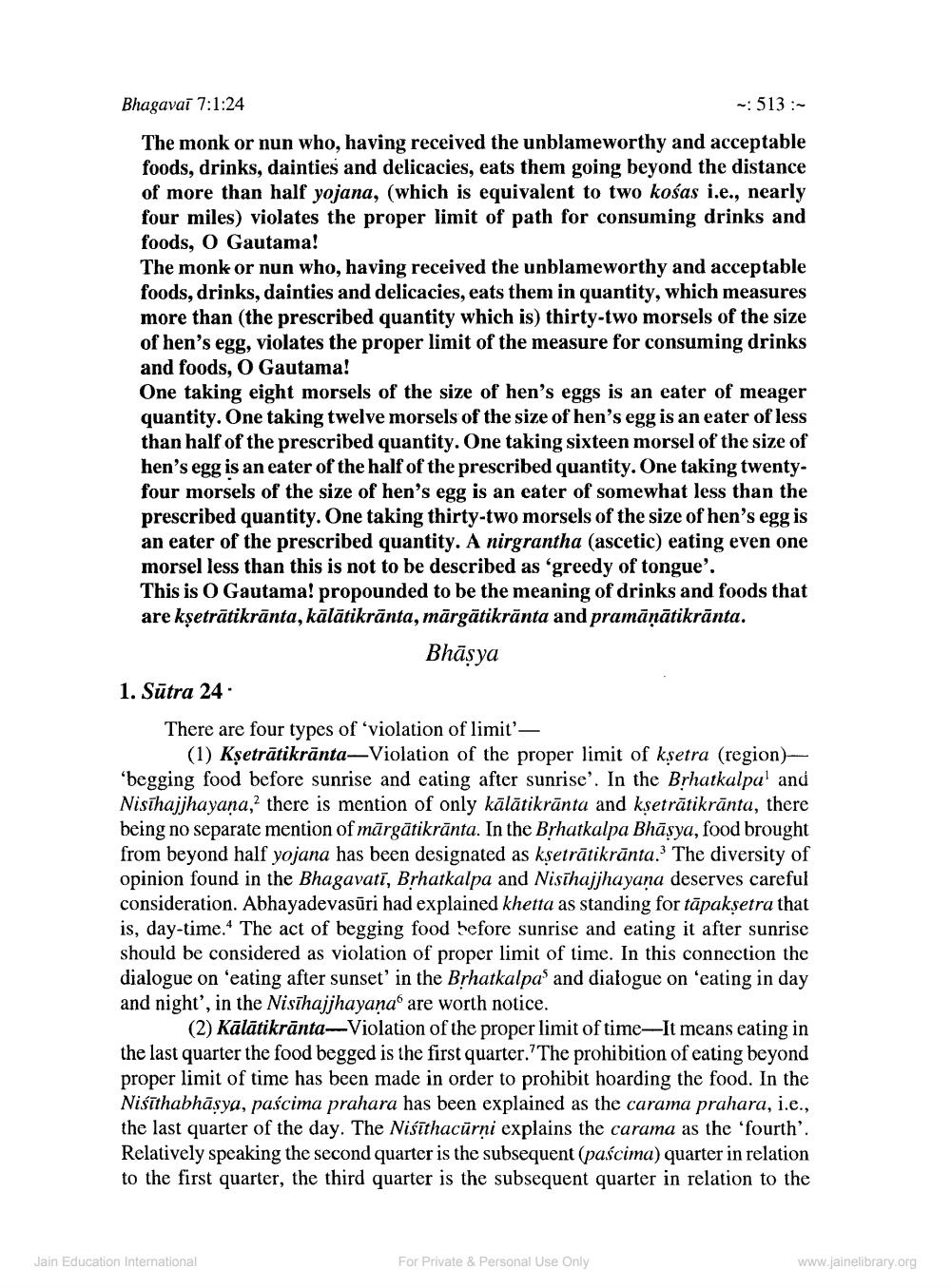________________
Bhagavai 7:1:24
- 513 :
The monk or nun who, having received the unblameworthy and acceptable foods, drinks, dainties and delicacies, eats them going beyond the distance of more than half yojana, (which is equivalent to two kośas i.e., nearly four miles) violates the proper limit of path for consuming drinks and foods, O Gautama! The monk or nun who, having received the unblameworthy and acceptable foods, drinks, dainties and delicacies, eats them in quantity, which measures more than (the prescribed quantity which is) thirty-two morsels of the size of hen's egg, violates the proper limit of the measure for consuming drinks and foods, O Gautama! One taking eight morsels of the size of hen's eggs is an eater of meager quantity. One taking twelve morsels of the size of hen's egg is an eater of less than half of the prescribed quantity. One taking sixteen morsel of the size of hen's egg is an eater of the half of the prescribed quantity. One taking twentyfour morsels of the size of hen's egg is an eater of somewhat less than the prescribed quantity. One taking thirty-two morsels of the size of hen's egg is an eater of the prescribed quantity. A nirgrantha (ascetic) eating even one morsel less than this is not to be described as 'greedy of tongue'. This is O Gautama! propounded to be the meaning of drinks and foods that are kşetrātikrānta, kālātikrānta, mārgātikrānta and pramāṇātikrānta.
Bhāsya 1. Sutra 24:
There are four types of 'violation of limit'
(1) Kșetrātikrānta-Violation of the proper limit of ksetra (region)'begging food before sunrise and eating after sunrise'. In the Brhatkalpa' and Nisīhajjhayana, there is mention of only kālātikrānta and ksetrātikrānta, there being no separate mention of mārgātikrānta. In the Brhatkalpa Bhāsya, food brought from beyond half yojana has been designated as ksetrātikrānta. The diversity of opinion found in the Bhagavati, Brhatkalpa and Nisīhajjhayana deserves careful consideration. Abhayadevasūri had explained khetta as standing for tāpakşetra that is, day-time. The act of begging food before sunrise and eating it after sunrise should be considered as violation of proper limit of time. In this connection the dialogue on 'eating after sunset' in the Brhatkalpa and dialogue on 'eating in day and night', in the Nisīhajjhayana are worth notice.
(2) Kālātikrānta-Violation of the proper limit of time-It means eating in the last quarter the food begged is the first quarter. The prohibition of eating beyond proper limit of time has been made in order to prohibit hoarding the food. In the Niśīthabhāsya, paścima prahara has been explained as the carama prahara, i.e., the last quarter of the day. The Niśīthacūrni explains the carama as the 'fourth'. Relatively speaking the second quarter is the subsequent (paścimaquarter in relation to the first quarter, the third quarter is the subsequent quarter in relation to the
Jain Education International
For Private & Personal Use Only
www.jainelibrary.org




